Is there any political party(or coalition) that will guarantee government provided universal health care - PH Plus did not do anything towards this at all. Sad to say that most MPs or politicians may be rich enough to use private clinics and hospitals - so little focus on healthcare for the rest of those in Malaysia..
Covid-19 focused attention on public health care and government hospitals/clinics, and then the Contract Doctors HARTAL ...and, the disturbing trend is that Malaysia may be moving towards a 'pay for healthcare' policy, which means that one without money will simply not be able to get needed treatment, surgery and healthcare.
We must not look at the amount Malaysia spend during the Covid-19 pandemic being in 2020 and 2021, but before that to understand the priority the government placed on providing free or very affordable healthcare to us in Malaysia. Most Malaysians cannot afford private healthcare - and that is reflected by the ever growing users of government hospitals and clinics.
Many countries provide FREE Healthcare and Education too - for now, Malaysia should strive to provide all Malaysians with government healthcare - that means government hospitals, clinics. In UK, the government even reimburse cost of travel by public transport and no fees are charged for treatment. In Thailand, a minimum payment of 30 Baht(about RM3) covers everything from examination, ward charges and everything.
In terms of Malaysian government spending, in 2018 for healthcare it was just 8.5% of total government spending. Compared to other upper middle income countries, we were amongst the lowest, other countries spend 15% to 27% of government spending.(see media report below by EdgeMarkets)
In terms of GDP, in 2018 Malaysia only spend lowest at 1.92% of GDP, compared to other upper middle income countries that spend about 5-15%.
This shows the very low emphasis that the Malaysian government places on public healthcare. This must change.
After Independence (MERDEKA), the government policy and action was to ensure that everyone in Malaysia had access to government provided and financed health care. That was a fundamental right and need for all in Malaysia.
Hence, we had the General Hospitals, the Health Centres(Dispensaries), Maternity clinics, Dentists, Government Mid-Wife(Bidan)(who will visit the homes), the mobile health clinics, etc ...we still have them all over the place in Malaysia, and users of these healthcare facilities had to register and pay just RM1.
Healthcare was thus available to all including the poor including heart healthcare...
Of course, the rich and with money, could choose to go to private clinics or private hospitals, and pay for it themselves.
Malaysia moves towards privatization
In Malaysia, sometime during the BN rule under Mahathir, things started changing with an emphasis of privatizing healthcare... hence the promotion of private hospitals, etc.
This may explain, why the government chose not to build government hospitals in locations where there were private hospitals.
I pity the people of Petaling Jaya and Subang Jaya today, for they simply do not have a Government Hospital - WHY is this? In PJ, we had a government hospital in the University Hospital - then it was corporatised, meaning possibly rates becoming higher than normal government hospitals.
The problem with private hospitals is COST - and for the poor and even middle income, it simply is not affordable. I remember an incident one night, in Subang Jaya, when a kid of a low-income family, whilst playing injured himself. The parents desperately rushed their kid to the nearest hospital, which was a private hospital - the hospital treated the kid who required a few stitches, and issued a bill of more than RM2,000. [If there was a government hospital, then all that would have had to be paid would have been RM1 or maybe a bit more, but definitely not more than RM50]
Then Heart Healthcare went under Institute Jantung Negara - now you PAY a lot if you need it. Government employees exempted but not even the POOR.More will die sooner because of lack FREE government-provided heart healthcare in Malaysia
Then, Malaysia moved towards HEALTH TOURISM - trying to woo foreigners to come and PAY and get health treatment - see Time for Ismail Merican to resign as DG of Health. Healthcare is not a 'business' - it a commitment an obligation to all in Malaysia..
DEFINITE CHANGE OF POLICY AND REFORMS NEEDED
The government is the manager of OUR money, and Malaysians should really push for government universal healthcare for free, and FREE Education.
Users of government hospitals will tell you that most hospitals are operating beyond capacity - as the number of patients increase. The lack of government hospitals expansion looks like a strategy to push away those seeking healthcare to PRIVATE hospitals and clinics. We are 'forced' to go to private clinics and hospitals..
What we need is for Malaysia to provide UNIVERSAL HEALTH CARE for all. Those who do not want to use government hospitals and clinics are always free to go and use private doctors, clinics and hospitals.
What we urgently need are more government hospitals...we need to increase bed capacity, ... [It was a sad day when so many Covid-19 patients had to be deprived of needed hospital care - they had to stay home and quarantine themselves - the number of BROUGHT IN DEAD(BID) patients in Malaysia is an embarrassment - how many BID cases were Covid patients that the government said to home quarantine][There was a government hospital in Mentakab which was shut down, when the Temerloh Specialist Hospital started operating. We thought they will take the opportunity to upgrade and re-build the Mentakab General Hospital but yet to happen. A SPECIALIST HOSPITAL is not a General Hospital. They receive only cases referred by General Hospitals and maybe government clinics - and a specialist hospital serves a wider area - West Pahang.]
There was not even 'visiting doctors and medical staff' to be able to home visit these self-quarantined, and do needed professional medical check-up and monitor their conditions.
What we also need are more government health centers(Pusat/Klinik Kesihatan) that operates 24 hours - after working hours with minimal staff - doctors, nurses, pharmacists,... These will require an additional at least 3 doctors per clinic to work outside working hours for the good of the people.
Klinik 1Malaysia failed because no doctors - only a medical assistant with minimum basic medicines.
Ambulances - well, there is a serious shortage. I experienced this when my mother fell down and injured her head(she had 2 blood clots in the brain). After calling for the ambulance, a call comes saying that there is no available ambulance - and it could be hours before one was available, and I had to take her to the nearby Klinik Kesihatan - but when I arrived there, save for the guard, there were no medical staff - then had to go to another clinic around 7 Km away...
Does Malaysia have Helicopter ambulances - so needed to speedily transport patients from places far away from hospitals - especially in the rural areas. In Klang Valley, where traffic jam is common - such helicopter ambulances are also needed.
Transport services to transport the elderly and disabled to hospital and back - there is now, but very very few - a caring government would have that in place.
BUT as we have seen how little Malaysia spends on healthcare - and even less to build new hospitals/clinics/pharmacies is that the priority of healthcare for Malaysians is very low priority.
Malaysia need to spend more for healthcare - that means at least DOUBLE what it spends now - to help the people.
According to WHO, this metric reflects the priority a government places on health. The average percentage in 2018 was 5.6% in low-income countries, 7.3% in lower-middle-income countries, 11.6% in upper-middle-income countries and 14% in high-income countries. Malaysia has progressed from 7.3% of total government expenditure in 2011 to 9.3% in 2018. However, the figure is still lower than the average among upper-middle-income countries.
PRIVATIZED HEALTHCARE can be found in some capitalist(neo liberal) countries like the USA - where, if you cannot afford to pay, you simply may not get healthcare...If you cannot pay, then you simply will not get healthcare or treatment ....full stop. Is this what Malaysians want.
The Malaysian national budget for 2021 is RM322. 5 billion (~US$77 billion). The Ministry of Health's total budget for next year is RM31. 9 billion (~US$7.6 billion) - that was slightly less than 10%
Cover Story: Malaysia’s healthcare allocation lags behind peer group average but rising, World Bank, WHO data shows
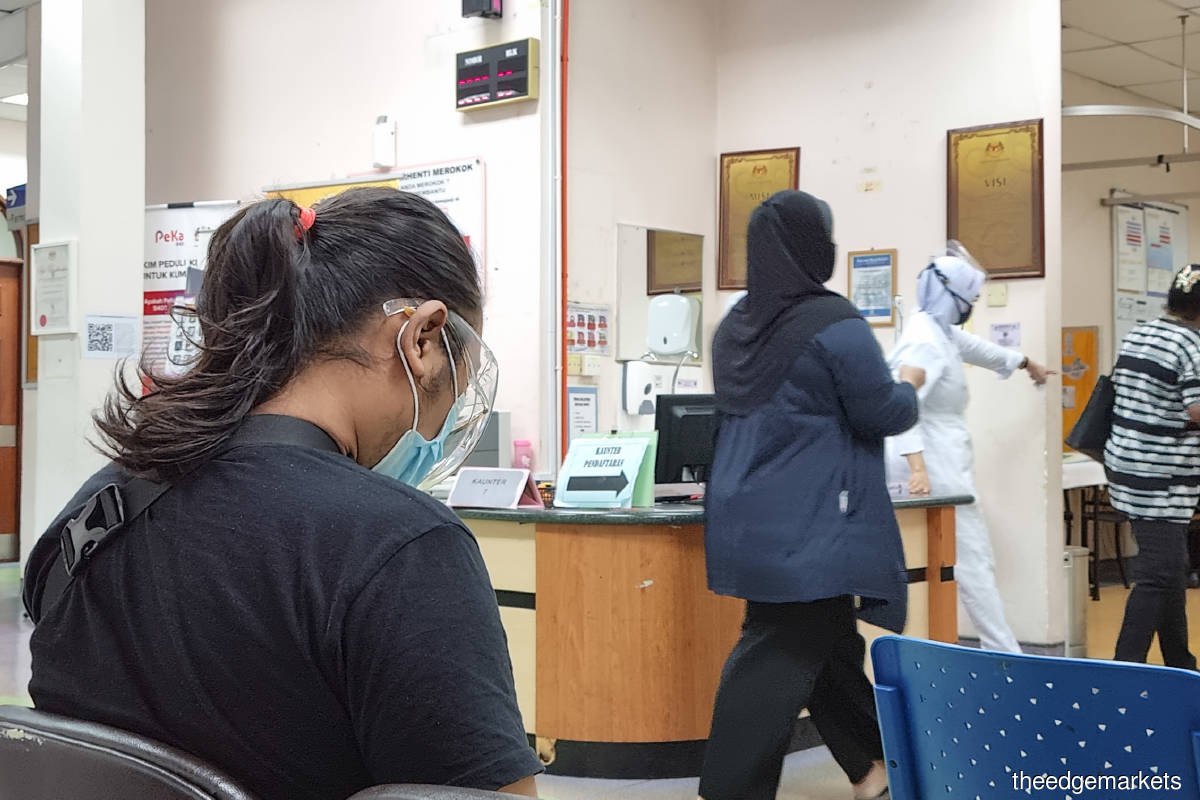
(Photo by Suhaimi Yusuf/The Edge)
IN recent months, the public has been bombarded with news that Malaysia’s public healthcare system is in “critical condition” as Covid-19 admissions swamp hospitals. Meanwhile, social media is flooded with images of the dire situation, including pictures of Covid-19 patients being attended to on the floor at a major hospital that has run out of beds.
Against this backdrop, one cannot help but wonder whether the country has put enough financial resources into the public healthcare system, especially for this long-drawn-out pandemic.
Recall that after Budget 2021 was unveiled last November, the Malaysian Health Coalition was especially vocal about the healthcare allocation. It said the 4.3% increase in the healthcare budget to RM31.9 billion in 2021, excluding the additional funds allocated under the Covid-19 Fund, was insufficient.
The coalition had earlier called for the healthcare allocation to be raised to 4% of gross domestic product (GDP).
An analysis of public healthcare spending over the last 10 years shows the number in absolute terms rising 82%, from RM16.85 billion in 2011 to RM31.9 billion in 2021. That is expected, owing to population growth, inflation and the economic progress of the country.
As a percentage of total government spending, the healthcare expenditure allocation has also inched up in the last 10 years, from 7.3% in 2011 to 9.9% in 2021.
However, healthcare allocation as a percentage of GDP has not moved much over the last decade. In 2011, the healthcare allocation, which comprised both development and operating expenditure, worked out to 2.4% of GDP. By 2021, healthcare made up only 2.2% of GDP.
Throughout the 10 years, the number ranged between a low of 2% in 2018 and a high of 2.5% of GDP in 2012 as well as 2013.
Does this mean Malaysia has been underinvesting in the healthcare sector over the last decade?
According to data from the World Bank, which is provided up to 2018, the Malaysian government’s healthcare expenditure does lag behind the average of 3.84% of GDP among upper-middle-income countries.
Note that government healthcare expenditure as a percentage of GDP among upper-middle-income countries ranges widely, with the highest at 15.21% and the lowest at 0.59% in 2018.
Meanwhile, for high-income countries, the average government healthcare expenditure amounted to 5.23% of GDP. Like upper-middle-income countries, government healthcare expenditure ranges widely — between 1.36% and 9.27% of GDP.
In a report titled “Global Spending on Health 2020: Weathering the storm”, the World Health Organization (WHO) highlights that there is no clear correlation between income and percentage of healthcare spending within any income group.
“The policy choices that each country makes in the organisation of its health financing system, as well as differences in epidemiological patterns, have important implications for health spending levels and likely explain much of the observed variation,” it notes.
Take, for example, Thailand, which is in the upper-middle-income country category, like Malaysia. In 2018, World Bank data showed that the country’s government healthcare expenditure amounted to 2.9% of GDP compared with Malaysia’s 2%.
It is worth noting that Thailand and Malaysia finance healthcare differently. Thailand, which achieved universal healthcare in 2002, funds its healthcare through three major insurance schemes — one for government employees and dependants, another for the private sector and the Universal Coverage Scheme (UCS) for the remaining citizens. Only the UCS is funded completely by the government; the other two insurance schemes are on a premium basis.
As for Malaysia, the public healthcare system is financed largely through the federal government revenue, which is derived mainly from taxes. An allocation is made in the budget each year by the Ministry of Finance. It should be highlighted that Malaysia’s public healthcare system is one of the better ones when it comes to affordability for its citizens, with Malaysians paying a minimal amount to receive the necessary treatment.
While the government healthcare expenditure as a percentage of GDP has remained the same over the last decade, government healthcare spending as a share of total government spending has increased slightly.
According to WHO, this metric reflects the priority a government places on health. The average percentage in 2018 was 5.6% in low-income countries, 7.3% in lower-middle-income countries, 11.6% in upper-middle-income countries and 14% in high-income countries.
Malaysia has progressed from 7.3% of total government expenditure in 2011 to 9.3% in 2018. However, the figure is still lower than the average among upper-middle-income countries.
To be fair, the percentage that is below the average of other upper-middle-income countries may not be the best indicator, given the wide range of each income group. Within the upper-middle-income-country group, the number ranged between 3% and 28% in 2018.
It is no different among the high-income-country group as well. Data shows that the Japanese government spends the most on healthcare, at 23.6% of total government expenditure, whereas the Qatari government spends only 6.3% of its total government expenditure on public healthcare.
That said, the overall share of health spending by governments has risen over the years in both upper-middle- and high-income countries.
This is likely to increase further in 2020 and 2021 as governments worldwide procure vaccines and equip their healthcare professionals with more financial resources to fight the pandemic.
In 2020, initial estimates put Malaysia’s healthcare allocation as a percentage of total government expenditure at 10.2%. Budget 2021 shows, however, that the allocation fell to 9.9% as a percentage of the budget. This is because Budget 2021 includes a RM17 billion Covid-19 fund that is separate from the various ministries allocation.
The actual health spending made by the government for 2021 will be known only two years later.
The Covid-19 pandemic has put a strain on healthcare worldwide, including in Malaysia. Even Taiwan, which had been lauded for keeping Covid-19 infection numbers low earlier on, has seen a resurgence in cases. In 2018, the country’s health expenditure amounted to 6.6% of GDP.
Currently, Taiwan is seeing a 7-day average of 22 cases from its peak of 597 in May.
Its success in the early days, notes observers, was due to rigorous testing and contact tracing, isolation of positive cases and quarantining of close contacts. Population-based measures such as the wearing of face masks, physical distancing and avoidance of mass gatherings were effectively implemented.
Now, Taiwan faces a different challenge: The vaccination rate is extremely low, with only 0.7% of its population inoculated. Its success in keeping the virus at bay had prompted many to believe that vaccination was not necessary. There is also widespread distrust of vaccines among the general public.
On the other hand, Malaysia’s vaccination rate has risen dramatically
in recent weeks, making it one of the highest in the world. As at July
22, 15.07% of the population were fully inoculated and 32.34% had
received at least the first dose.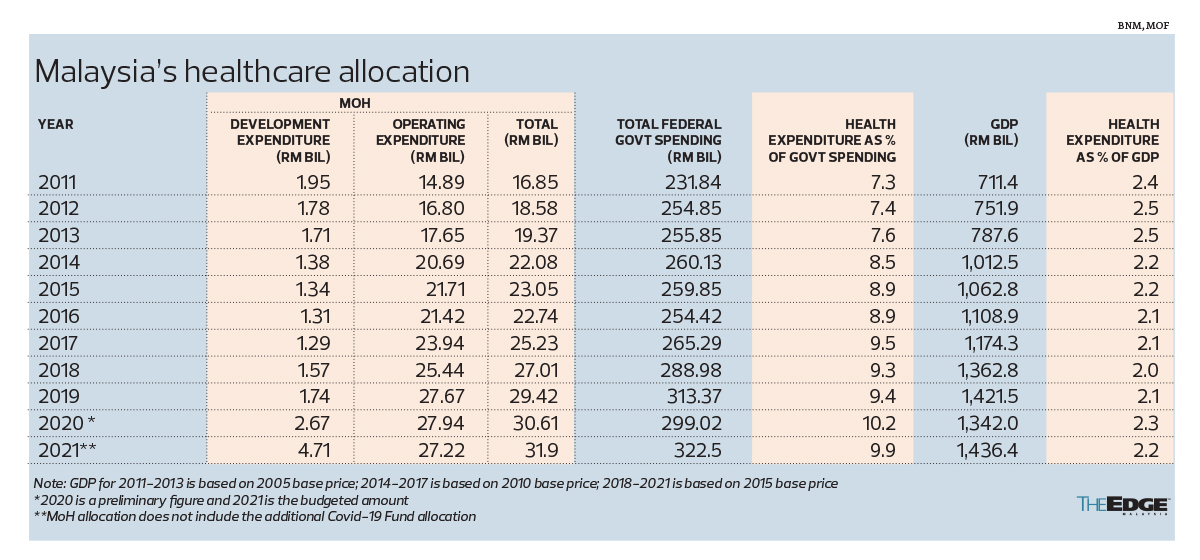
Cover Story: Expectations of higher healthcare and R&D spend may rebalance DevEx allocations in 12MP
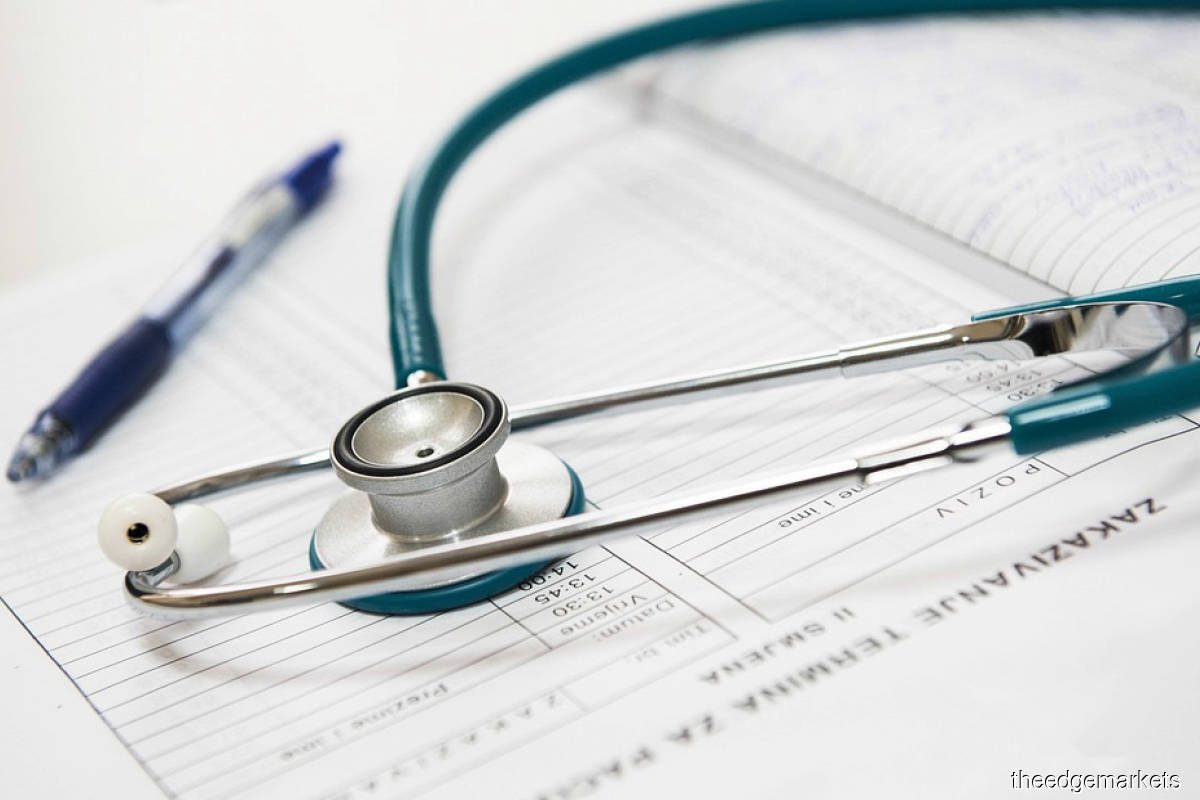
HEALTHCARE is expected to receive a higher fiscal allocation from the federal government in the post-Covid-19 world under the 12th Malaysia Plan (12MP; 2021-2025), not just to ease the strain on the public healthcare system but also to bolster the country’s capability to prevent and tackle any future pandemic.
While the country’s public healthcare system does offer citizens the option of more affordable treatment, there is the question of financial sustainability and coverage adequacy as society ages. Local health experts, as well as global organisations like the World Bank, have said the government needs to raise the amount allocated annually in the national budget for the public healthcare system. What Malaysia spends on healthcare (2% to 2.5% of GDP) lags the average spending of 3.84% of GDP among upper-middle-income countries in 2018, the World Bank noted in its Global Spending on Health 2020: Weathering the Storm report. To make up for years of underinvestment, the Malaysian Health Coalition, for instance, last year urged the government to allocate at least 4% of GDP to the public healthcare system every year. This includes both operating expenditure as well as development expenditure.
There was a marked increase in allocation to the Ministry of Health (MoH) in 2021, according to expenditure estimates when Budget 2021 was tabled in November 2020. Apart from the RM27.2 billion allocated for operating expenses — RM17.08 billion of which was for emoluments plus another RM1.9 billion for contract staff — some RM4.72 billion was allocated for development expenditure. The RM4.72 billion was 6.8% of the RM69 billion budgeted for development expenditure in Budget 2021 and is sizeable relative to the RM2.68 billion allocated in 2020 as well as the RM8.61 billion allocated (and spent) during the five-year period between 2016 and 2020 covered by the 11th Malaysia Plan (11MP).
The RM8.61 billion was 3.4% of the total RM253.15 billion spent and allocated for development expenditure between 2016 and 2020 covered by 11MP — making it the 10th highest recipient among about 30 ministries and departments allocated development expenditure. Except for a year-on-year decline of about RM21.3 million between 2016 and 2017, annual allocation to the MoH grew every year in absolute terms for each of the years under 11MP, with a marked increase seen for 2020 as well as for Budget 2021, official figures show.
Even so, there is a need to raise budgets for R&D in healthcare as well as other areas that can help build up Malaysia’s future competitive advantage.
Of the RM4.72 billion allocated for development expenditure under the MoH alone in Budget 2021, only RM21.86 million was for R&D, compared with RM15 million for health tourism. The larger allocation was RM2.86 billion for hospital facilities, RM589 million for equipment and vehicles, and RM366 million for a new hospital. Malaysia may well have allocations for R&D parked under other ministries, given that World Bank data showed the country spending 1.44% of its GDP on R&D in 2016 — less than South Korea’s 4%-plus of GDP but comparable with Singapore’s 2.08% of GDP, which is about the same size as Malaysia’s but has less than one-fifth of the population at only 5.7 million versus Malaysia’s 32 million.
Vaccine race
More recent data for Malaysia’s R&D spend, however, is not immediately known. What is certain is that Malaysia is already late as regional governments race to set up facilities to manufacture high-tech jabs in a bid to secure their own future vaccine needs as well as build internal capacity for a new sought-after export.
South Korea’s Samsung Biologics and Thailand’s Siam Bioscience already manufacture AstraZeneca’s Covid-19 vaccine. South Korea has also secured deals with Moderna and Novavax while Germany’s BioNTech, which co-developed its vaccine with Pfizer, is setting up a manufacturing plant in Singapore to produce hundreds of millions of doses of the mRNA-based vaccine annually.
In Malaysia, Pharmaniaga Bhd, which has a “fill-and-finish” facility for Covid-19 vaccine manufactured by China’s Sinovac, said in June that it “aims to accelerate the growth of the halal vaccine manufacturing business with various types of vaccine development projects” and that the facility is “targeted to start operating in 2024”.
As the country celebrated Malaysia Day on Sept 16, Indonesian Health Minister Budi Gunadi Sadikin told Reuters that the archipelago is in talks with the World Health Organization (WHO) and six drug companies to become a “technology transfer hub” to manufacture new-generation vaccines that can be quickly adapted to handle new virus variants — telling the latter that Indonesia would prioritise its purchase of Covid-19 vaccines from companies that shared technology and set up facilities in the world’s fourth most populous country with more than 276 million people.
Apart from vaccine-making, the ability to manufacture Covid-19 test kits as well as faster and cheaper ways to accurately trace and isolate cases would also provide an added advantage. In May, for instance, Singapore approved the use of a Covid-19 breath test that gave results within a minute that was developed by Breathonix Pte Ltd, a healthtech start-up of the National University of Singapore. The breath analysis that is installed at border points with Malaysia will reportedly be carried out alongside Covid-19 antigen rapid tests. MyEG Services Bhd in May entered into a memorandum of understanding with Breathonix to introduce the rapid breath test in Malaysia.
It remains to be seen if Malaysia will trim allocations for other ministries to be able to raise allocations for the MoH — both for the release of the five-year 12MP on Sept 27 as well as the upcoming Budget 2022 on Oct 29.
Half of DevEx goes to four ministries
According to The Edge’s compilation of data on development expenditure that had been publicly released at the time of writing, close to half of the RM253 billion allocation for development expenditure under 11MP (2016-2020) went to four ministries — the Prime Minister’s Department, Ministry of Finance (MoF), Ministry of Works and Ministry of Rural Development.
Under Budget 2021, the first under the five-year period covered by 12MP, some 31% of the RM69 billion in development expenditure went to the MoF (RM14.12 billion or 20.5% of allocation) and the Prime Minister’s Department (RM7.22 billion or 10.5%).
The Prime Minister’s Department received the highest allocation under 11MP at 16% of the total allocation over the five-year period. In 2016, its allocation of RM11.79 billion was 28.1% of the total development expenditure. Similarly, its allocation of RM11.01 billion was 24.5% of the total development allocation in 2017. Allocation for development expenditure to the Prime Minister’s Department saw a marked decline in 2018 and 2019 when the Ministry of Economic Affairs was carved out and given a separate allocation.
It was also in 2018 that allocations for development expenditure under the MoF became the highest of all the ministries — something which continued in 2019 (actual spending) as well as 2020 and 2021, according to preliminary and budget estimates for those years.
For Budget 2021, the RM14.12 billion allocated to MoF was 20.5% of the total allocation for development expenditure. Of this amount, RM13.6 billion came under “various capital injections” (pelbagai suntikan modal), according to expenditure estimates by the federal government.
“Various capital injections” accounted for the bulk of development expenditure by the MoF in 2019 and 2020 as well, making up 63.4% and 84.2% of the total allocation to the ministry at RM5.16 billion and RM8.13 billion in 2019 and 2020 respectively. This was up from RM70 million allocated for the same purpose in 2018. More than RM1 billion a year was allocated to a “Facilitation Fund” under MoF in 2018 and 2019, an amount that was reduced to RM300 million in 2020 and did not appear in 2021, according to broad breakdowns in the Federal Government Expenditure Estimates.
The Ministry of Works and the Ministry of Rural Development each accounted for just over 10% of the total allocation for development expenditure under 11MP, followed by between 6% and 7% each for the Ministry of Transport and Ministry of Defence.
Allocation for development expenditure for the Ministry of Education under 11MP would have been RM20.2 billion, or about 8% of the total allocation if one were to combine the allocations to the Ministry of Education and the Ministry of Higher Education (see table).
Whether these allocations yield the intended benefits for the country, people and economy lies in how well the spending is targeted and programmes executed.

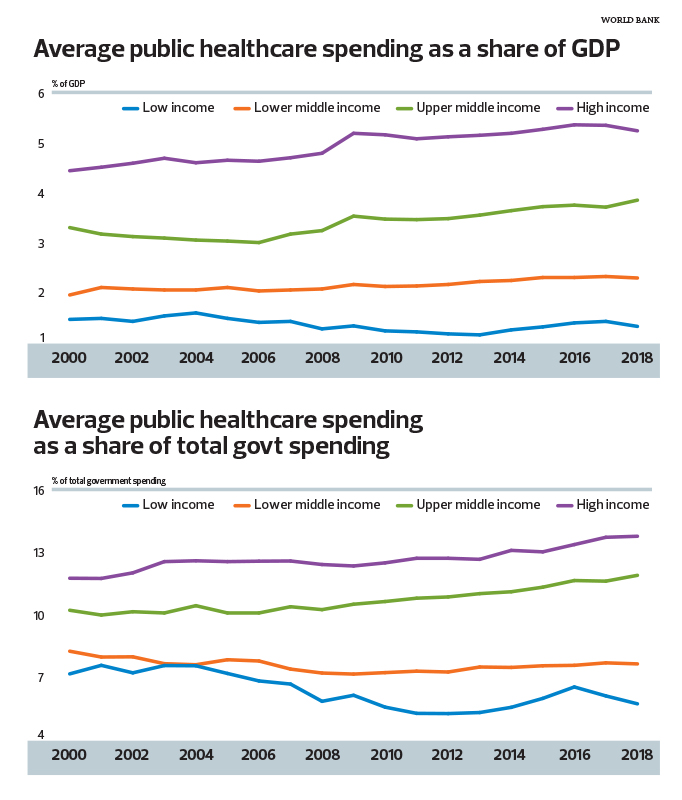
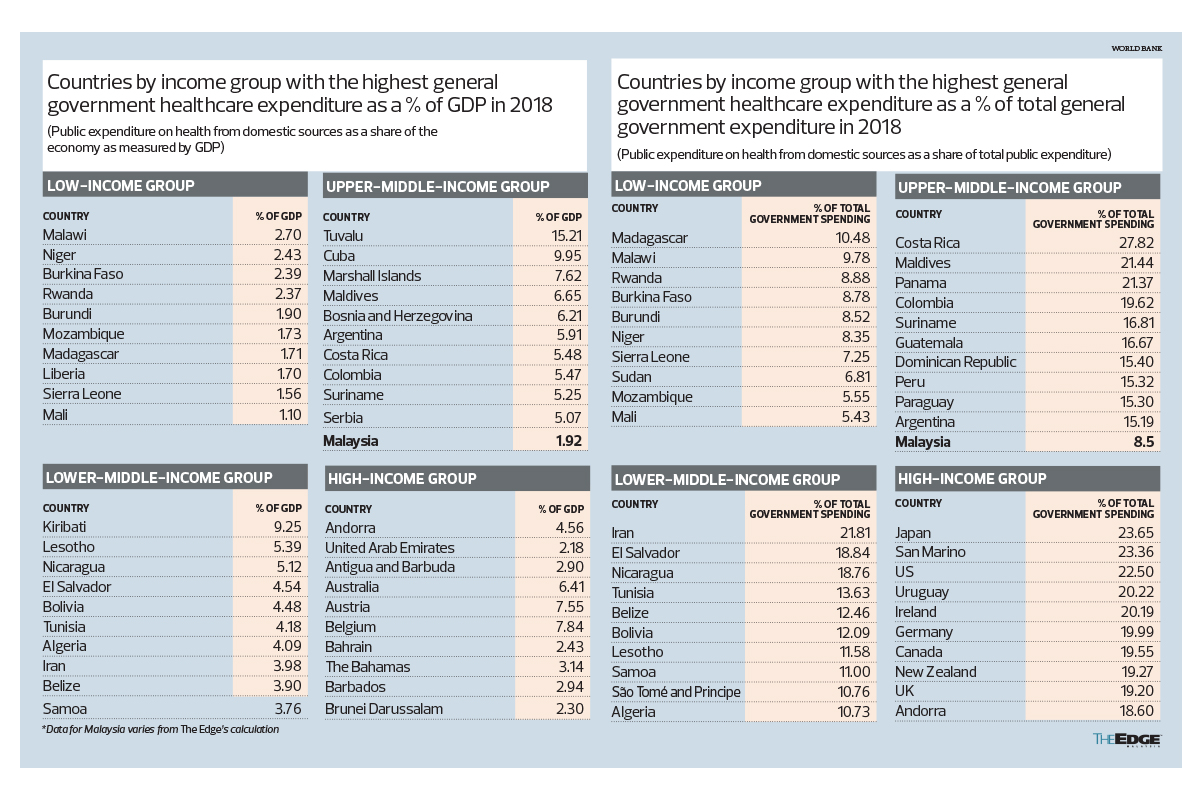
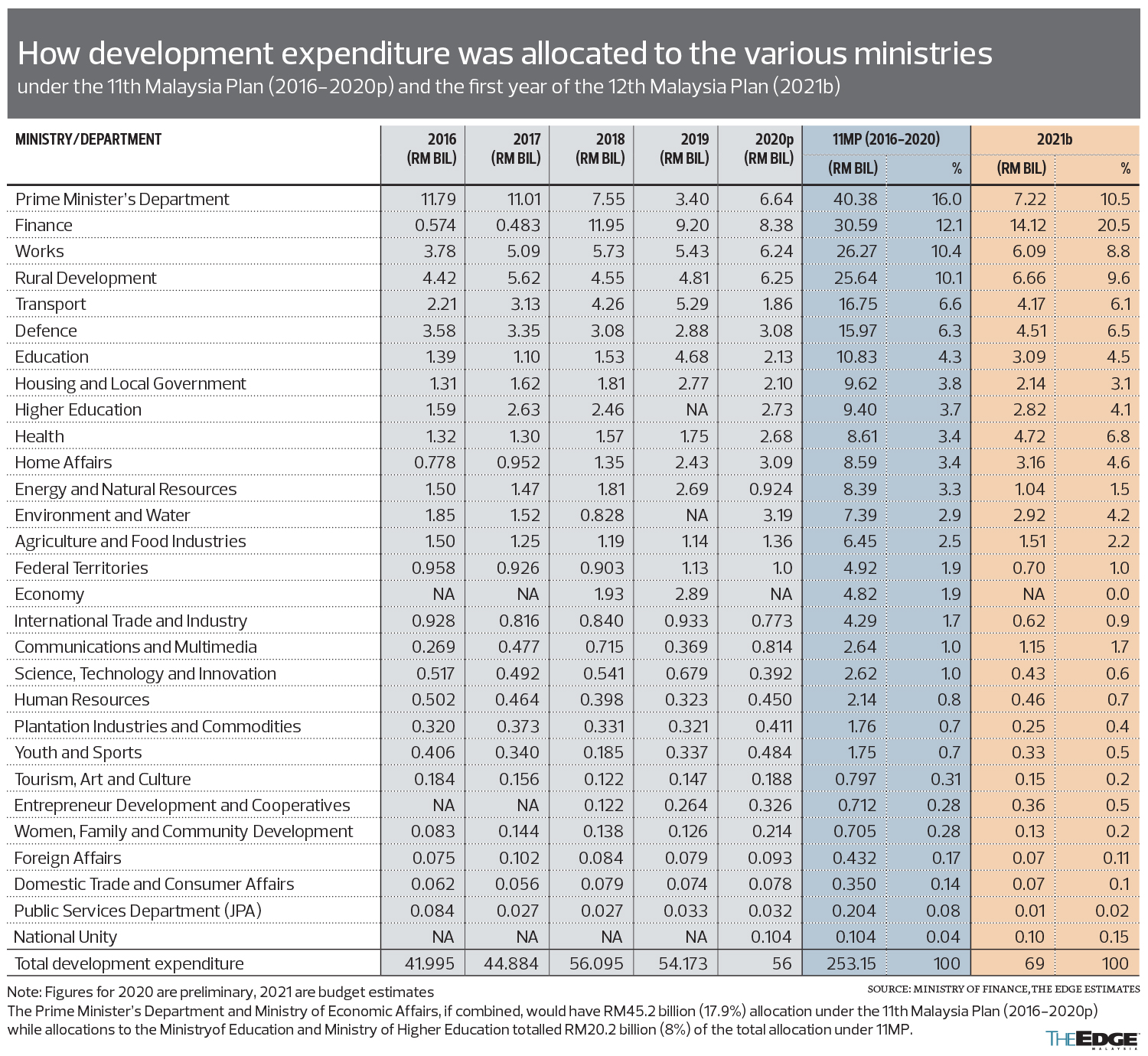






No comments:
Post a Comment